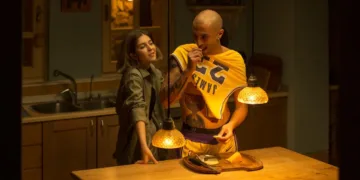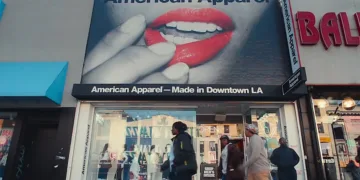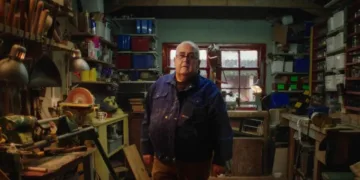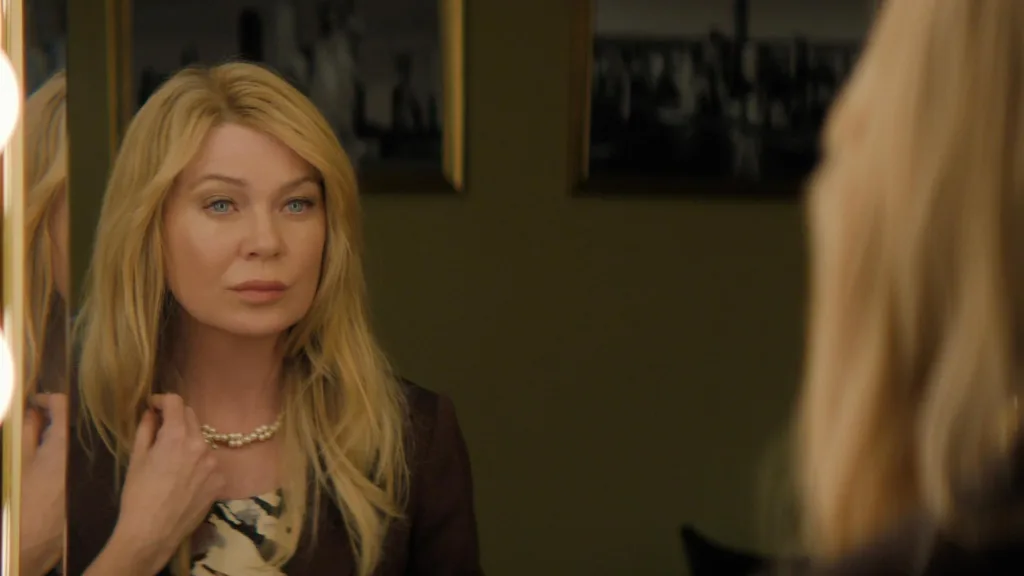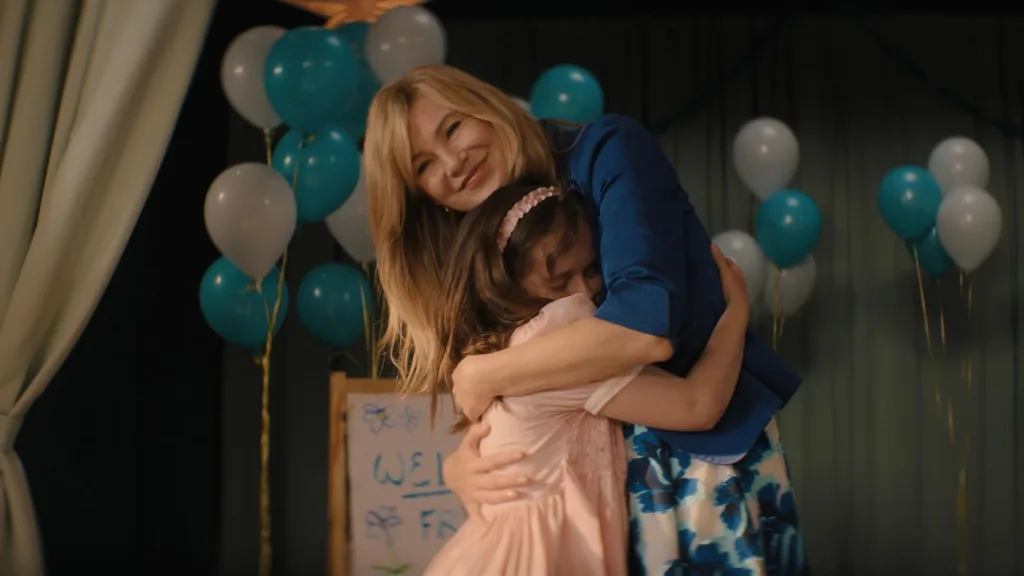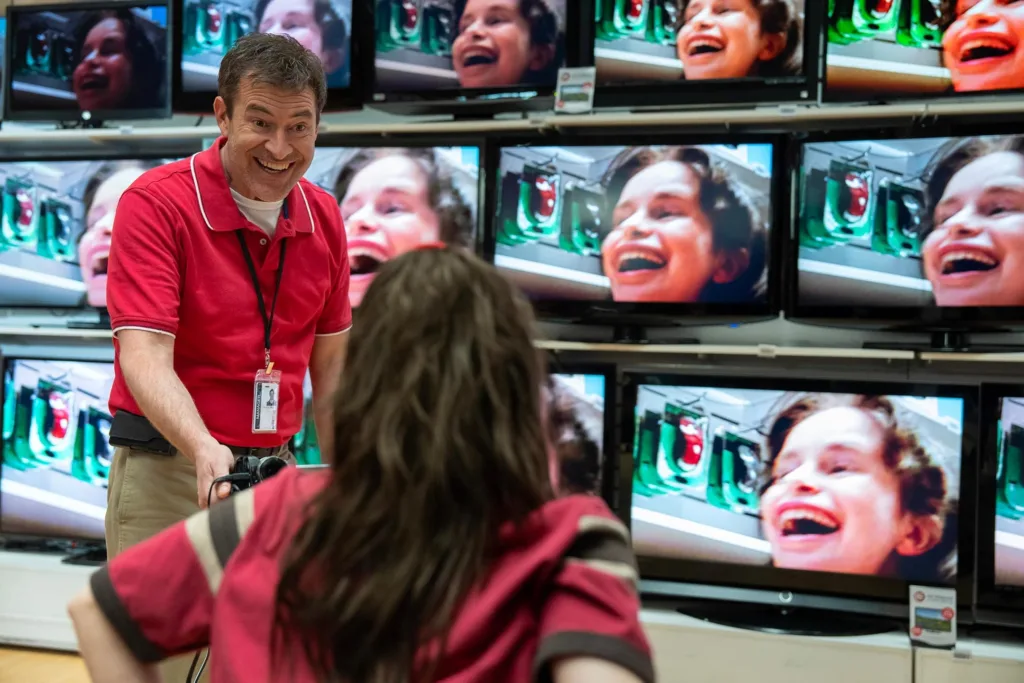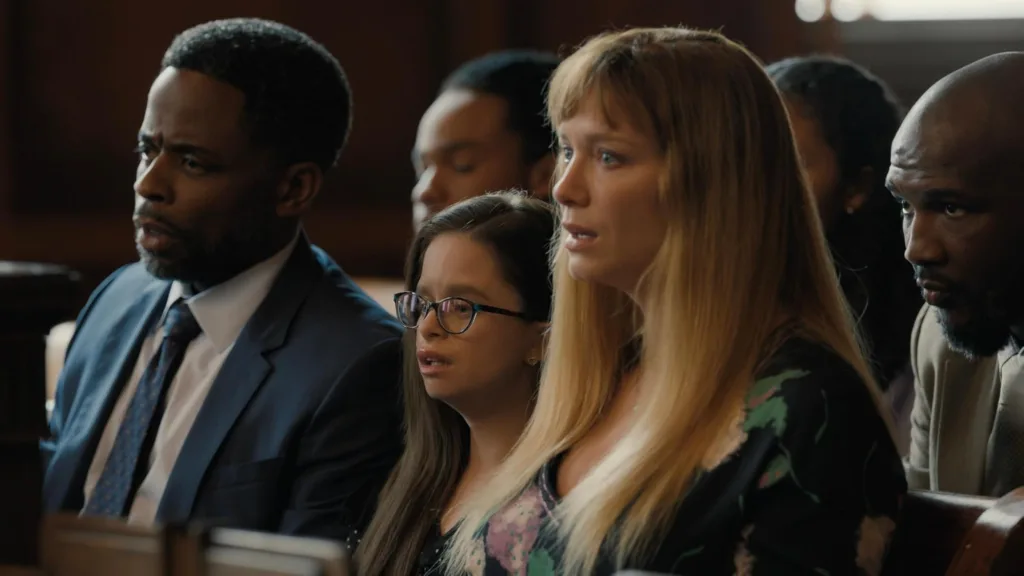Good American Family presents a vivid retelling of a troubled adoption saga, its narrative steeped in real-life complexity and the weight of unspoken sorrows. It paints a picture of a family caught in a collision of memories and misinterpretations, where a young woman’s disputed identity and her guardians’ conflicting memories share space like fractured reflections.
Legal notices introduce each episode, serving as somber markers that remind the audience of the caution inherent in recounting events tainted by ambiguity. This structure invites viewers to linger in uncertainty, each scene slowly unraveling secrets without providing an absolute resolution.
Two opposing voices arise in the telling: one voice speaks through the adoptive parents, whose recollections brim with both tenderness and unspoken regret, while the other resonates with the enigmatic cadence of a daughter whose existence challenges the conventional script.
Characters emerge as figures of profound inner conflict—Kristine Barnett embodies a striving yet tormented maternal ideal, Michael Barnett appears as a man overwhelmed by his own vulnerabilities, and Natalia Grace hovers in a space that is as unsettling as it is captivating. Their portrayals stir reflections on the nature of truth and the elusive quality of personal identity, leaving the viewer suspended in an atmosphere heavy with existential inquiry.
The Labyrinth of Fragmented Narratives
The series carves its tale by splitting the lens of reality into two distinct yet intertwined views. One strand echoes with the voices of the adoptive parents—a chronicle imbued with regret and wistfulness—while the other pulses with the enigmatic cadence of Natalia’s own account. This division stirs an unrest in the observer, a sense of disquiet that resists the comfort of a singular, unified truth.
The story unfolds in a manner that skips across moments and memories—a cascade of flashbacks and abrupt leaps that slowly unveil the intricacies of a perplexing case. The shifting angles of time mirror a mystery that is as convoluted as the human heart itself, where every recollection is tinged with both clarity and ambiguity. In this unpredictable dance of perspective, the narrative structure challenges our trust in any one version of events.
A fusion of genres colors the storytelling: there are echoes of investigative drama, the raw bite of real-life conflict, and hints of spectral dread that shimmer in the shadows of the plot. Scenes flicker between overt emotional display and eerie silence, each moment designed to unsettle and provoke thought.
The series employs formal legal notices at the beginning of each installment, a recurring element that questions the distinction between mere allegation and the stark evidence of experience. These markers serve not only as warnings but as invitations to question the nature of veracity in a world steeped in contradiction.
The pacing itself is a careful orchestration of suspense—a rhythm dictated by well-timed shifts and revelations. Specific moments catch the viewer off-guard, redirecting sympathies and unveiling new uncertainties, as if the narrative were a living, breathing entity that defies simple understanding.
Shadows Behind the Masks
Kristine Barnett emerges as a figure marked by inner contradictions. On the surface, she is portrayed as a nurturing guide—a protector whose every gesture seems aimed at salvaging fragile lives. Yet there is an undercurrent of ambition that subtly undermines her self-appointed role as guardian.
Certain scenes reveal a striking disparity between her public declarations of maternal virtue and the quiet, unsettling decisions made in private moments. These instants, captured in fleeting glances or hesitant pauses, suggest a soul caught in an unending struggle between idealism and self-interest, where the line between care and control blurs into obscurity.
Michael Barnett appears as a man wrestling with his own limitations, a character whose efforts to be a pillar of affection are constantly challenged by his own indecision. His portrayal interweaves moments of light-hearted absurdity with the gravity of personal failure. In one scene, a gentle smile masks a cascade of doubts, reflecting a vulnerability that borders on tragic comedy. His journey is marked by a series of choices that seem both impulsive and painfully inevitable, each one deepening the enigma of his internal conflict.
Natalia Grace stands at the crossroads of perception and reality. Initially presented as a potentially menacing interloper, she gradually unfolds into a figure of fragile complexity. The casting choice infuses her with a presence that is both disquieting and strangely tender—a living paradox where maturity intertwines with the innocence of youth. Her performance captures an ever-shifting identity that leaves the audience oscillating between fear and sympathy.
Supporting characters contribute fleeting yet potent brushstrokes to this portrait of familial discord. Figures from the periphery, whether law enforcement or extended kin, appear sporadically, each adding a nuanced note to the collective dissonance. Their interactions with the central trio amplify the moral uncertainties that resonate throughout the narrative, challenging viewers to question the true nature of responsibility and remorse.
Shades of Duty and the Veil of Veracity
The series casts parental duty and its miseries into a chiaroscuro of emotions, where care contorts into exploitation beneath the weight of unspoken guilt. The portrayal of guardianship here is painted with the tremors of lost innocence—a state in which the act of nurturing becomes a burden of responsibilities that may bleed into the realm of neglect.
One cannot help but sense that every gesture of care conceals an undercurrent of self-interest; moments arise where the well-practiced façade of maternal warmth clashes with private decisions that betray a darker inner calculus.
In this narrative, truth is a shape-shifting specter, its form ever-changing as each account unfolds. Conflicting versions of events generate a complex interplay, a dance of shadows where the credibility of each claim flickers like a candle in a draft.
The viewer is left to wander through a maze of voices, their reliability suspended in an unsteady balance that offers little comfort. There exists a peculiar tension in the way personal recollections are spun into a network of half-truths and fabrications—a state that questions the very nature of memory and perception.
The commentary on media sensationalism emerges as a piercing critique of our collective appetite for scandal. The series hints at the distortion that occurs when intimate tragedies are repackaged for mass consumption, a phenomenon that leaves the true agony of experience obscured behind the veneer of spectacle.
Characters manifest the dualism of human nature; they oscillate between the roles of savior and saboteur, their actions echoing a struggle that is both tender and merciless. Certain scenes, charged with an unsettling energy, invite the observer to ponder how affection can merge with cruelty in the quiet pauses between dialogue and silence.
Illuminating Shadows: The Artistry of Production and Framing
The series exhibits a deliberate and unsettling creative vision, its script weaving ethical dilemmas and unforeseen narrative twists into a fabric of dramatic intensity. The writing teeters on a fine line, rendering the real-life case with a deliberate vagueness that invites both contemplation and discomfort. There is a measured tension in the words—each line a silent question about duty and deceit.
Visually, the show employs a muted palette of light and shadow, where subtle shifts in framing mirror the inner tumult of its characters. The camera lingers on dimly lit corridors and half-forgotten expressions, capturing moments that speak louder than dialogue ever could. A lingering shot of a rain-soaked window, for instance, serves as a quiet metaphor for the blurred boundaries between memory and reality.
Sound and editing further deepen the experience; an ambient score punctuates pauses between revelations, while fragmented cuts in the editing style create a rhythm that unsettles the viewer. Each auditory note and abrupt transition contributes to a layered narrative that refuses linearity, echoing the fragmented nature of truth.
The settings themselves—spare, stark interiors and isolated public spaces—function as silent narrators, their design resonating with the inherent rawness of true-crime storytelling. A carefully curated set not only grounds the drama in its origins but also casts an eerie glow over moments of heightened emotion.
Legal disclaimers, presented at the outset of each episode, serve as more than formalities. They stand as subtle markers, framing every unfolding scene with an ever-present reminder that the distinction between allegation and fact is as delicate as it is transient.
Cultural Echoes and Reflections
This series occupies a curious space among true-crime dramatizations, emerging at a time when society craves stories that blur the demarcation between fact and fiction. Its presence in today’s media scene provokes a meditation on our collective hunger for narratives that unsettle the mind and disturb the conscience.
The very act of dramatizing a real-life tragedy invites a meditation on the ethical price of entertainment—how does one transform raw human suffering into a spectacle without diminishing its inherent sorrow?
The transformation of personal tragedy into public performance raises moral questions that are both timeless and urgently contemporary. The series provokes inquiry into how personal narratives are refracted through the prism of media, challenging viewers to scrutinize the veracity of what they see. It casts a reflective light on modern values, questioning whether our cultural appetite for sensational stories might distort the lived reality of those involved.
This work beckons further reflection on the balance between creative expression and fidelity to painful truths. It plants seeds of inquiry about accountability and the possibility of redemption, inviting the audience to contemplate the complex interplay between artistic license and the ethical representation of lived experience.
The Review
Good American Family
This series is a haunting examination of fractured memories and moral dilemmas. Its narrative challenges viewers to question the nature of truth and the ethics of storytelling, while performances offer a stark portrayal of flawed human nature. The experience provokes reflection on responsibility, media spectacle, and the weight of unspoken sorrow.
PROS
- Rich, multi-layered narrative that challenges conventional truths.
- Compelling performances that reveal deep human conflicts.
- A thought-provoking exploration of ethical dilemmas.
- Visually striking cinematography that enhances the mood.
- Bold storytelling that blends true crime with dramatic tension.
CONS
- Complex structure may leave some viewers disoriented.
- Ambiguity in narrative can be frustrating for fans of straightforward plots.
- Sensationalized elements risk overshadowing emotional depth.
- The ethical portrayal of real events might not satisfy all viewers.





















